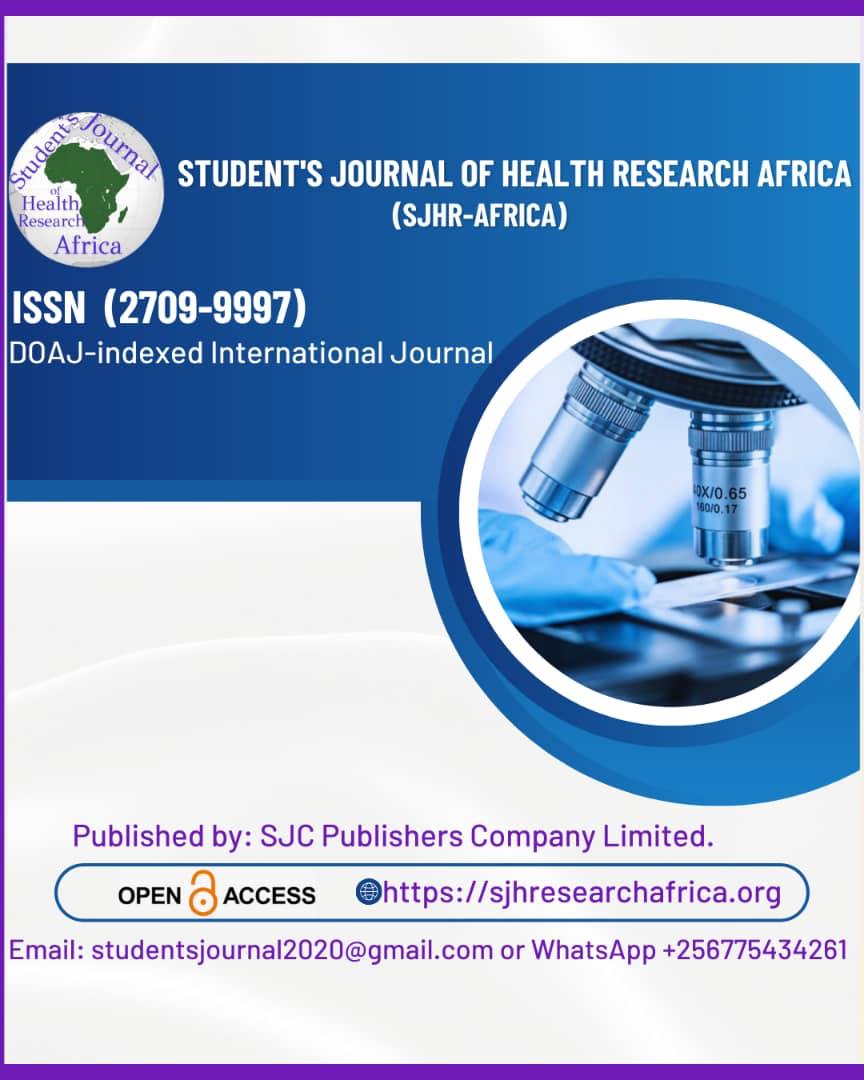Levosulpiride-induced extrapyramidal symptoms: A 15-case series from a tertiary care centre.
DOI:
https://doi.org/10.51168/sjhrafrica.v6i6.1822Keywords:
Levosulpiride, Extrapyramidal Symptoms, Drug-induced Parkinsonism, Acute Dystonia, Tardive Dyskinesia, Akathisia, Pharmacovigilance, ADR, Fixed-Dose CombinationAbstract
Background
Levosulpiride, a dopamine D2 receptor antagonist commonly used in India for gastrointestinal disorders, has been increasingly associated with extrapyramidal symptoms (EPS), especially with prolonged use and in fixed-dose combinations (FDCs) with proton pump inhibitors (PPIs). Despite its widespread use, awareness of its neurological adverse effects remains limited.
Objective
To present a case series highlighting the clinical profile, management, and outcomes of patients who developed extrapyramidal symptoms (EPS) following levosulpiride use, with an emphasis on the importance of early detection and rational prescribing practices.
Methods
A prospective observational case series was conducted at the ADR Monitoring Centre of Maharaja Krushna Chandra Gajapati Medical College and Hospital, Berhampur, Odisha. Fifteen patients presenting with neurological symptoms following levosulpiride administration were systematically evaluated. Detailed clinical histories, imaging, and laboratory investigations were performed to rule out alternative causes. Causality was assessed using the WHO-UMC scale, and all cases were reported to PvPI. Levosulpiride was withdrawn in all cases, and treatment was tailored to symptom type.
Results
Among 15 patients (8 females, 7 males; aged 18–66 years), drug-induced Parkinsonism was most common (10 cases), followed by acute dystonia (2), tardive dyskinesia (2), and akathisia (1). The onset ranged from 9 to 164 days post-levosulpiride initiation. Most patients improved post-withdrawal. Fixed-dose combinations were implicated in prolonged exposure.
Conclusion
Levosulpiride, even at therapeutic doses, can cause significant and sometimes persistent extrapyramidal symptoms. This case series underscores the importance of restricting its use to short durations, monitoring for neurological symptoms, and educating both prescribers and patients. Regulatory action against inappropriate FDCs and improved pharmacovigilance reporting are warranted to ensure safer therapeutic outcomes.
Recommendations
Use levosulpiride short-term with regular neurological checks. Educate patients and caregivers to recognize early symptoms. Avoid high-risk groups. Prefer safer alternatives. Stop immediately if EPS occurs. Report to pharmacovigilance. Avoid unnecessary fixed-dose combinations.
References
Lozano R, et al. The efficacy of levosulpiride in functional dyspepsia and nonerosive reflux disease. Multicenter study. Austin J Gastroenterol. 2017;5(2):1075.
Distrutti E, et al. Gastrointestinal symptoms and perception in dyspeptic patients treated with levosulpiride. Gut Liver. 2019;13(3):349–354.
Macarri G, et al. Comparison of levosulpiride and metoclopramide in dyspeptic patients. Aliment Pharmacol Ther. 2018;47(4):575–582.
Choudhury S, Chatterjee K, Singh R, Shubham S, Trivedi S, Chatterjee S, Kumar H. Levosulpiride-induced Movement Disorders. J Pharmacol Pharmacother. 2017 Oct-Dec;8(4):177-181. doi: 10.4103/jpp.JPP_32_17. PMID: 29472751; PMCID: PMC5820749.
Singh, Madhusudan Prasad; Maheshwari, Manisha; Saurabh, Sushant1; Singh, Juhi2. Movement Disorders Associated with Levosulpiride: A Systematic Review of Prevalence, Risk Factors, and Therapeutic Approaches. Neurology India 73(2):p 222-237, Mar–Apr 2025. | DOI: 10.4103/neurol-india.Neurol-India-D-24-00556
Joe J. Levosulpiride-Induced Neurological Adverse Effects: A Prospective Study from a Tertiary Care Center. Ann Indian Acad Neurol. 2020 Mar-Apr;23(2):174-176. doi: 10.4103/aian.AIAN_449_18. Epub 2020 Feb 25. PMID: 32189857; PMCID: PMC7061517.
Downloads
Published
How to Cite
Issue
Section
License
Copyright (c) 2025 Suvendu Kumar Panda, Snehasini Dash, Pratyush Mishra, Jasmine Mahanta, Mousumi Pradhan

This work is licensed under a Creative Commons Attribution-NonCommercial-NoDerivatives 4.0 International License.






















